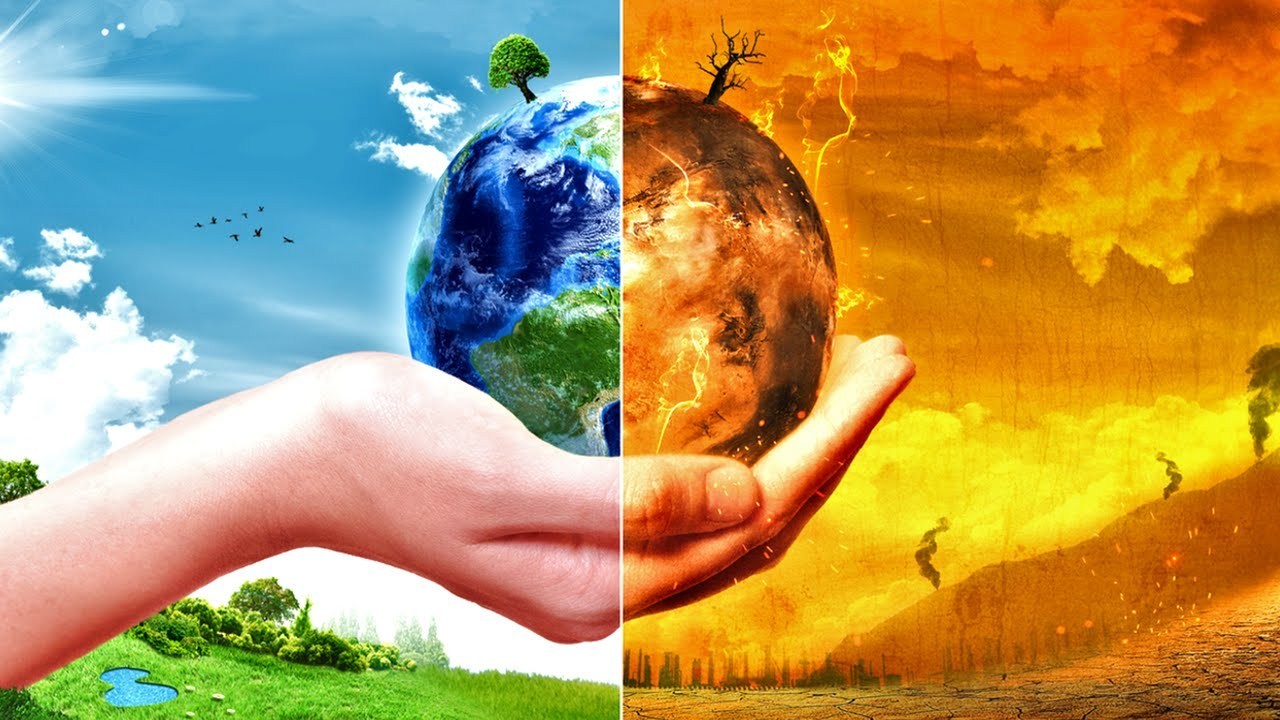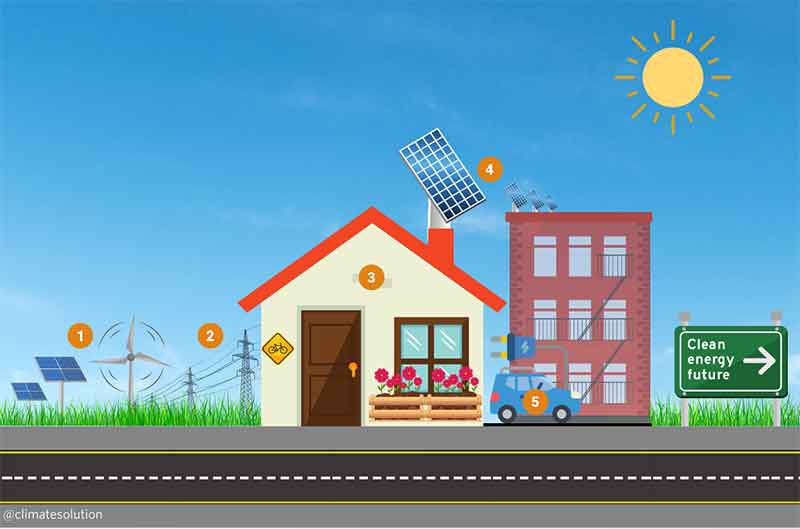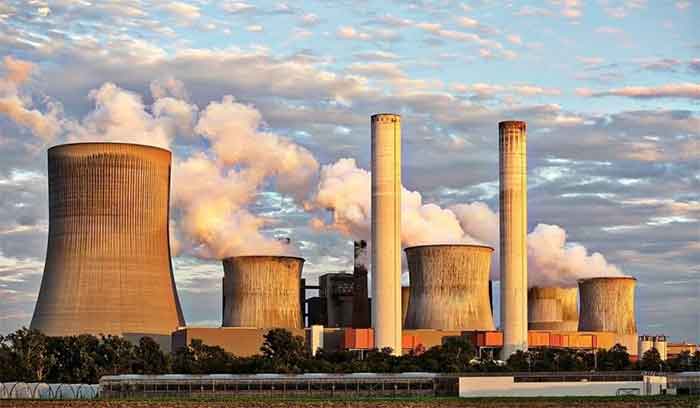
A new report by the World Meteorological Organization makes dire predictions for the next five years: Global temperatures rising to new record levels, continued ocean heating and acidification, sea ice loss and glacier melt, sea level rise, and more extreme weather.
The new Global Annual to Decadal Climate Update, 2023-2027, released this week by the WMO said: There is a near certainty at least one year out of the next five will beat out 2016 as the new hottest year on record. There is equal certainty (98%) that the next five years, together, will also be the warmest five-year period on record.
According to the report, yearly average temperatures are expected to be from 1.1°C to 1.8°C above the pre-industrial average between 2023 and 2027. This includes a roughly 66% chance that one year out of the next five will exceed 1.5°C above pre-industrial levels.
According to the WMO, the chance of one year reaching or rising above 1.5°C has increased dramatically. In 2015, the chance was near zero. From 2017 to 2021, it was 10%. Now, it has jumped up to 66%.
“Global mean temperatures are predicted to continue increasing, moving us further and further away from the climate we are used to,” Dr. Leon Hermanson, the UK Met Office scientist who led the report, said in the WMO press release.
The report focuses largely on a global view of the next five years.
It also highlights several expected regional impacts.
For instance, winters from 2023 to 2027 are expected to be warmer than normal across nearly the entire globe. However, during those winters, the Arctic is projected to be over three times hotter than the global average.
These reports, which are issued on a yearly basis by the WMO, provide a glimpse of the projected near-future impacts of human-caused climate change, along with how those impacts may combine with naturally-occurring events such as El Niño.
“This report does not mean that we will permanently exceed the 1.5°C level specified in the Paris Agreement which refers to long-term warming over many years,” WMO Secretary-General Petteri Taalas said in a press release. “However, WMO is sounding the alarm that we will breach the 1.5°C level on a temporary basis with increasing frequency.”
As global temperatures rise, the loss of sea ice and glaciers accelerates, precipitation rates around the world are altered resulting in flooding and drought, sea level rise increases, and the likelihood of extreme weather and wildfires grows worse.
“A warming El Niño is expected to develop in the coming months and this will combine with human-induced climate change to push global temperatures into uncharted territory,” Prof. Taalas said. “This will have far-reaching repercussions for health, food security, water management and the environment. We need to be prepared.”
Although the possibility of global average temperatures exceeding 1.5°C continues to rise, many experts have already laid out pathways to avoid crossing that threshold permanently.
The Global Annual to Decadal Climate Update is issued annually by the WMO. It provides a synthesis of the global annual to decadal predictions produced by the WMO designated Global Producing Centers and other contributing centers for the period 2023- 2027.
The Report’s Predictions
Latest predictions of the report suggest:
- The annual mean global near-surface temperature for each year between 2023 and 2027 is predicted to be between 1.1°C and 1.8°C higher than the average over the years 1850-1900.
- The chance of global near-surface temperature exceeding 1.5°C above preindustrial levels for at least one year between 2023 and 2027 is more likely than not (66%). It is unlikely (32%) that the five-year mean will exceed this threshold.
- The chance of at least one year between 2023 and 2027 exceeding the warmest year on record, 2016, is very likely (98%). The chance of the five-year mean for 2023-2027 being higher than the last five years (2018-2022) is also very likely (98%).
- The El Niño Southern Oscillation (ENSO) is predicted to most likely be positive in December to February 2023/24.
- The Arctic temperature anomaly, relative to the 1991-2020 average, is predicted to be more than three times as large as the global mean anomaly when averaged over the next five northern hemisphere extended winters.
- Predicted precipitation patterns for 2023 relative to the 1991-2020 average suggest an increased chance of reduced rainfall in parts of Indonesia, the Amazon and central America.
- Predicted precipitation patterns for the May to September 2023-2027 average, relative to the 1991-2020 average, suggest an increased chance of above average rainfall in the Sahel, northern Europe, Alaska and northern Siberia, and reduced rainfall for this season over the Amazon and parts of Australia.
- Northern Eurasia is likely to have above average precipitation in December-February over 2023-2027, in line with recent trends there.
Brief Summary Of The Observed Climate Of The Last Five Years
- Near-surface temperatures in 2022 showed a mixed pattern dominated by a colder tropical East Pacific, consistent with La Niña conditions, and mostly warmer anomalies over Eurasia.
- Over 2018- 2022, apart from central Canada, the anomalies were close to zero or positive across the globe.
- Warm anomalies were greatest at high latitudes in the Northern Hemisphere, especially the Arctic, and generally larger over land than ocean.
- In 2022 and in the last five years, sea-level pressure was anomalously low over Antarctica. The Aleutian Low for 2018-2022 was anomalously weak, as expected for the extended La Niña conditions that prevailed.
- During 2018-2022, parts of Asia, southeastern North America, northeastern South America and the African Sahel were wetter than average, and southern Africa, Australia, southern South America, and western Europe and parts of North America drier than average.
- These anomalies were generally also present for 2022, though less clearly, with the notable exception of eastern Australia which showed more widespread above average precipitation.
- Eastern USA, parts of East Asia and South Asia, and the African Sahel were wetter than average in May to September.
- Australia and southern South America were mostly drier than average over the five years in both seasons.
- The eight-year period 2015-2022 is likely the warmest eight-year period on record.
- Since one of the largest El Niño events on record occurred in 2015/16, annual mean anomalies in the tropical East Pacific relative to the rest of the tropics have been largely negative (La Niña) or neutral.
- In last year’s report there was no clear signal for the El Niño Southern Oscillation and a weak La Niña was observed for the third year in a row. This La Niña is predicted to decline.
- The Arctic (north of 60°N) near-surface temperature anomaly is more than three times as large as the global mean anomaly.













































